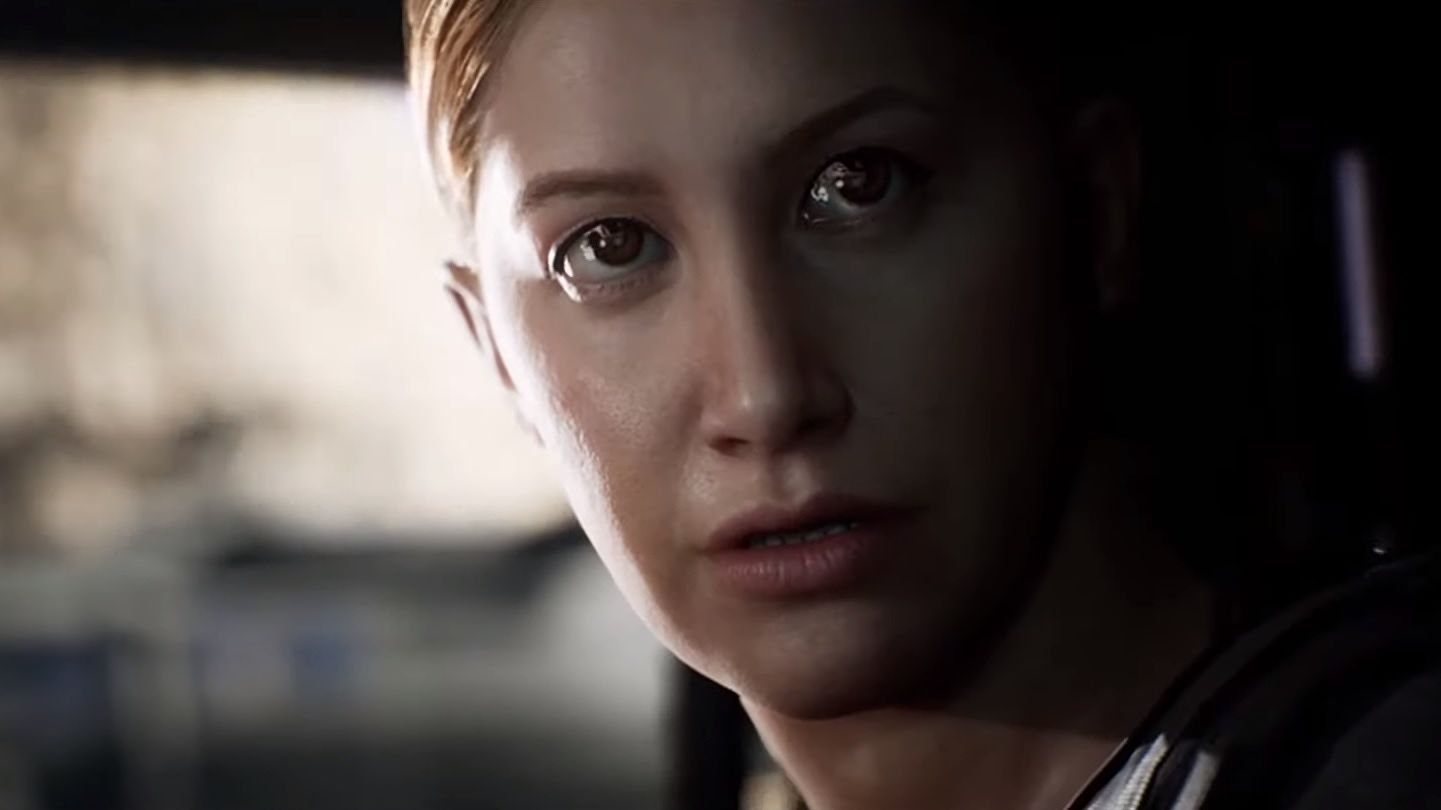After a hallucinatory adventure in the middle of the Pacific Ocean with Man of Medan, and a terrifying vortex of isolation in the secluded village of Little hope, the horror anthology now takes us to the distant deserts of Iraq with House of Ashes to tell a story about a fateful encounter with an old curse that spans millenniums, and how it will put one’s humanity to the test.
The developer as always succeeds in doing everything necessary to employ well known cinematic horror inspirations into the interactive framework of the series. The overall focus this time seems to be about keeping the players in a state of constant anxiety and claustrophobia, stemming from venturing inside confined spaces such as closed tunnels, underground tombs and other mental triggers.
House of Ashes is now available on PS5, PS4, Xbox Series X/S, Xbox One and PC.
The Dark Pictures: House of Ashes Review
House of Ashes takes place in Iraq at the end of 2003, just a few days after Saddam Hussein was captured. According to Colonel Eric King‘s findings and based on satellite intel, the US army sent a patrol of soldiers headed by him on a mission to locate some the chemical weapons of mass destruction that the dictator is implied to have hidden as a comeback measure against the US forces.
Upon arrival, the Americans team including the colonel and his wife Rachel, along with Sergeant Nick and First Lieutenant Jason are attacked by a group of Iraqi soldiers who still have unwavering loyalty to the Iraqi republican guard, including our final playable cast member, Lieutenant Salim Othman, who is going to play a big part into exploring the political conflict between both countries.
A violent gun battle initiated between the two parties, and resulted in many casualties on all sides. However, the situation quickly escalated when earth fissures started to open up around the area, causing everything to sink down into the unknown. Neither side understood back then that this would be the beginning of a real nightmare, deeply rooted in antiquity, and tied to a mythical kingdom whose king has no problem with spilling innocent’s blood in order to achieve his unknown goals.
Taking matters in your own hands
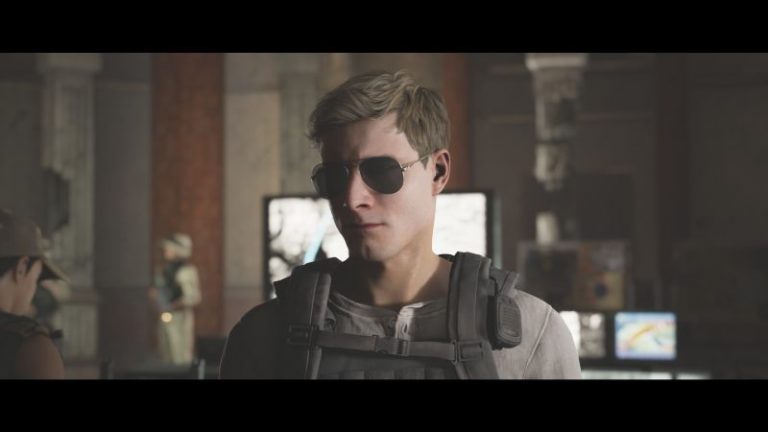
House of Ashes follows the narrative structure of the earlier installments in the anthology, blending interactive player inputs with cinematographic presentation through the lens of five characters of distinct personalities and backgrounds. Players will take turns in guiding each character through dialogue choices, exploration segments and chase scenes, and will always have an active role in deciding the outcome of the journey.
Most of the game’s events take place this time in the ruins of what looks like an ancient temple. A cold and dark place made up of stifling and suffocating tunnels, inhabited by what appears to be a a disfigured and bloodthirsty creature. However you choose to play, the game will roughly take you from 4-6 hours to finish in its entirety.
On one hand, one player can control all the characters at the same time, collecting hieroglyphs and reacting to quick time events at set intervals. On the other hand, the experience can be shared with to five players at once, either online or locally through lending out the controller in a group play session, and taking turns in experiencing the game until the end like a long movie night.
Each player will be tasked with the fate of the character of their choosing, as they take them through many separate paths and different play sequences. Depending on the player’s choices and ingenuity in controlling their emotions while being exposed to the ghastly and terrifying horrors of the old ones, the life and death of each character will ultimately be decided before the story ends.
The Descent into Madness
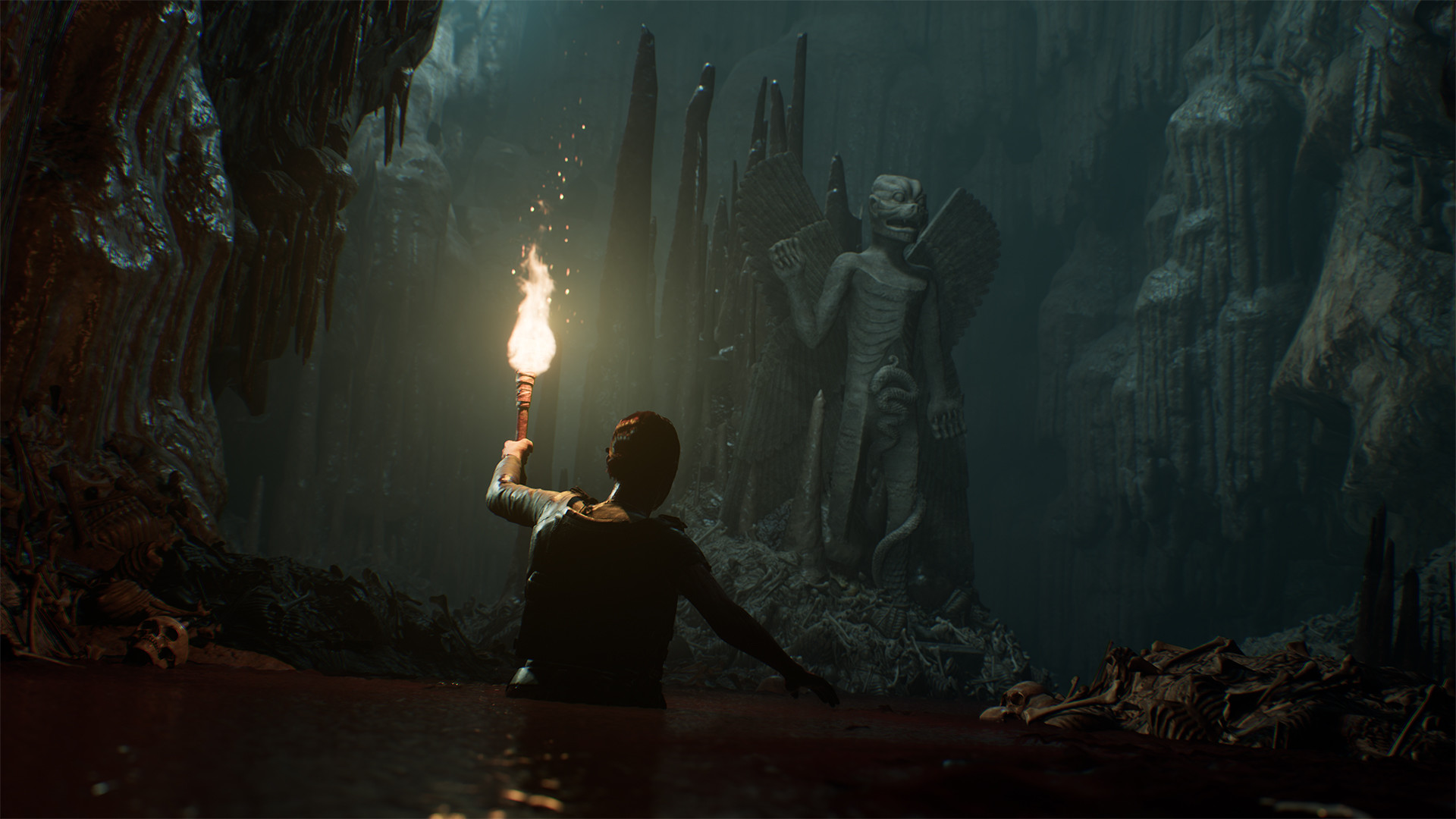
Monsters are rarely visible in the game. The real fear of House of Ashes comes from the enclosing spiral of claustrophobia. Not having enough room to move or breath, not being able to turn around easily and see what’s behind you, the anxiety you feel when become entrapped in an inescapable prison. Being physically imprisoned can have a large impact on one’s integrity as much as the usual narrative prison of the mind, maybe even more!
The game rarely becomes creative with its setting to be frank, as it proudly wears its inspirations on the sleeve, and acts as a homage to many iconic works of the same concept such as the Descent and the Cave, as well as many direct references to some scenes from the Exorcist, Aliens, Mountains of Madness and even some Lovecraftian elements can be observed.
There is not much inventiveness to be praised, yet still, House of Ashes continues to impress from start to finish, partly due to the way the plot is broken down into many interactive and unexpected sequences, and mostly owing to the characters and how they are utilized into a mix of horrific inspirations and sociopolitical conflicts.
Conflict is inevitable but combat is optional
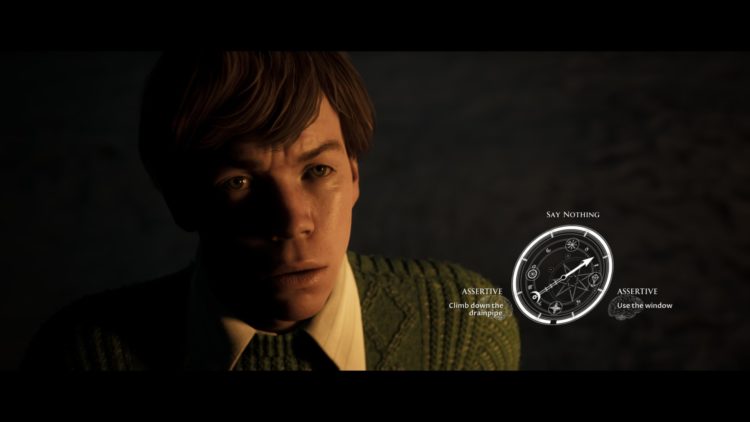
Peace is not the absence of conflict but the presence of creative alternatives for responding to conflict or violence. Hence this time, -and unlike past entries- the characters are very grounded into the main setting and the history behind the location, and everyone of them has their own dreams and plans from the start, instead of just inviting them to be there at the wrong time and place.
The character’s interpersonal relationships provide a lot of tension with each passing minute, like Jason who is moved by the trauma of his recent past, and a sudden confrontation with an enemy soldiers flips his inner world upside down, or Eric and Rachel, an estranged couple living in a tense relationship across boarders, and then there is Salim the solider who finds himself in the lion’s den, and quickly proves to be the emotional driving force of the entire narrative.
One of the most important themes in House of Ashes is drawing the line between friend and foe, which becomes very thin in intense circumstances. Is it appropriate to bury political and emotional grudges in the face of a greater evil? Can man really sow the seeds of a new peaceful life and reclaim his humanity amidst the despair, or is it a futile effort, bound to never manifest in our lifetime?
All these moral challenges are being presented for the player to figure out the answer on their own, in a manifolded web of choices that forces the consequences of choosing (or not choosing) upon the player in many creative ways. There are about 60 different ways to kill the characters, and with that number comes plenty of critical moments that test the player’s mental integrity and the consistency of the principles they live by.
House of Ashes: A step back
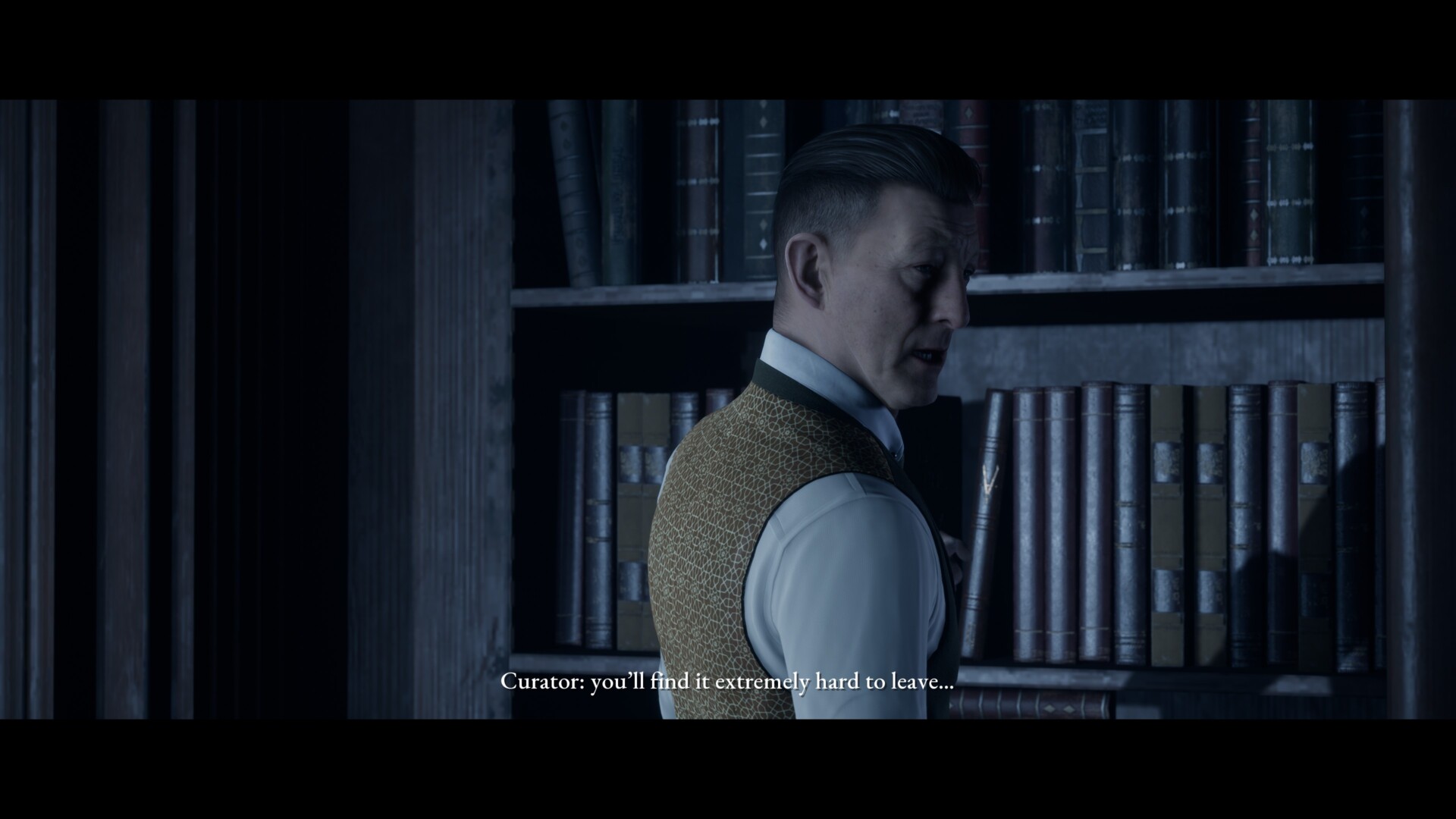
All of this easily translates into the great amount of replayability this game offers, in addition to the multitude of motivational ways to keep the player attentive and focused. Also now the game shows you a slight timed prompt before each QTE to help you get prepared for the next fateful choice, along with many accessibility options and difficulty levels to ease the experience for the players.
As for what House of Ashes does differently, it allows you to move the camera freely while exploring in certain sections, but given that most environments in this game and very tight and cramped, with little space to maneuver, we found this addition to be useless. In fact, we missed the implementation of fixed camera angels in the past to induce the sense of helplessness and enchant the player.
The designs of most passages in the game are very elementary and basic, and nothing new worth mentioning regarding the movement mechanics. And while we understand the developer may have went in this direction to keep the players engaged during long sessions, but we felt the game has lost a bit of its powerful cinematic expression, which is of course the main selling point of the series.
While the visual direction remains stunning, we can’t ignore the impressive use of sound effects to convey the feelings of great emptiness inside the depth of the earth, the disturbing noises, airflows, bat squeaks, and a whole array of other sounds you would barely hear in other games. All of this wouldn’t be possible if it weren’t for the Dolby Atmos technique glorifying this aspect of the game on Xbox Series X, and enableing you to feel every sound and recognize its source, even if you are using regular headphones.
Finale
FinaleThe Good
- Amazing sense of claustrophobia and helplessness
- Interesting narrative with social and political depth
- You are always at the center of the experience with Dolby Atmos audio work
- Multiple accessibility options and difficulty levels
The Bad
- Relinquishing fixed camera angels during certain sections removes some of the tension
- Walking sections are boring and mostly linear
